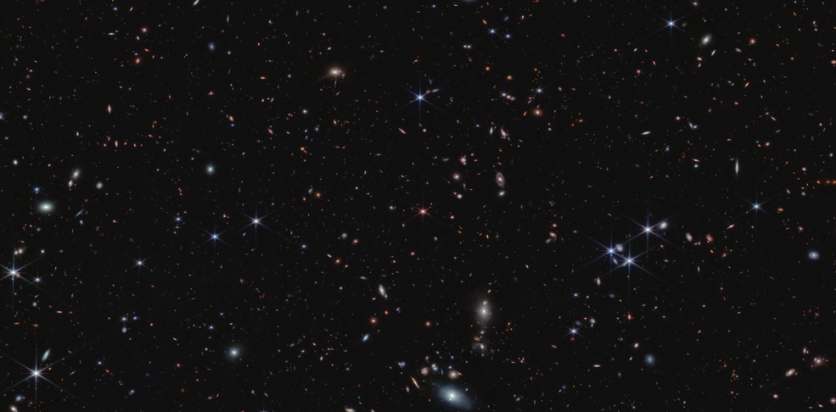NASA's James Webb Space Telescope has made a significant discovery regarding the early universe, shedding light on a phenomenon known as the "Era of Reionization."
New data from the telescope has revealed why the gas between stars and galaxies in the early universe became transparent, despite initially being opaque.

The Transformation After Big Bang
The research, led by Simon Lilly of ETH Zürich in Switzerland, provides insights into the transformation that occurred in the universe approximately one billion years after the big bang. At that time, the gas in the universe was extremely hot and dense.
For hundreds of millions of years, the gas gradually cooled before undergoing a reionization process once again. The new findings suggest that the formation of early stars in galaxies played a significant role in heating and ionizing the gas, ultimately leading to its transparency.
Scientists have long sought definitive evidence to explain these transformations, and the James Webb Space Telescope results have finally provided the necessary insights.
The telescope not only confirms the presence of transparent regions surrounding galaxies but also measures their sizes. Daichi Kashino of Nagoya University, the lead author of the research team's first paper, explained, "With Webb's data, we are seeing galaxies reionize the gas around them."
The transparent gas regions surpass the galaxies' size, resembling a hot air balloon with a small pea suspended within. Analysis of the telescope's data indicates that these relatively diminutive galaxies played a crucial role in driving the reionization process, effectively clearing vast expanses of space surrounding them.
As time went on, these transparent "bubbles" expanded and merged, ultimately resulting in the entire universe achieving transparency.
NASA Webb Data on a Quasar
Deliberately focusing on a specific period just before the culmination of the Era of Reionization, the research team employed observations of a quasar - an intensely radiant, active supermassive black hole-to examine the gas situated between the quasar and our telescopes.
This investigation was made possible due to data from NASA's James Webb Space Telescope, with observations from other notable telescopes such as the W. M. Keck Observatory in Hawaii and the European Southern Observatory's Very Large Telescope and Magellan Telescope in Chile.
The team's discoveries not only unveiled the gas' composition and condition but also identified galaxies in close proximity to the line of sight. These galaxies were observed to be encompassed by transparent regions spanning approximately 2 million light-years in radius, indicating their role in clearing the surrounding space during the final stages of the Era of Reionization.
This distance is comparable to the gap between our own Milky Way galaxy and its nearest celestial neighbor, Andromeda. Before this breakthrough, researchers lacked definitive evidence to elucidate the underlying cause of reionization.
However, NASA's James Webb Space Telescope has now provided unparalleled insights into this pivotal era in the universe's history. The telescope's remarkable images also unveiled an immense black hole within the quasar at the field's center, boasting a mass 10 billion times greater than that of the Sun.
The research team plans to conduct further investigations in five additional fields, each anchored by a central quasar. Webb's results offer a deeper understanding of the galaxies that existed during the Era of Reionization. The findings were published in The Astrophysical Journal.
Related Article : Watery Secret? NASA's James Webb Detects Vapor on Scorching Exoplanet

ⓒ 2025 TECHTIMES.com All rights reserved. Do not reproduce without permission.




